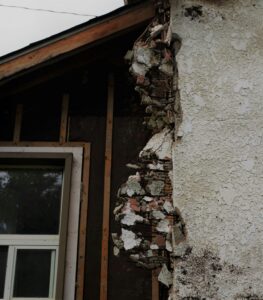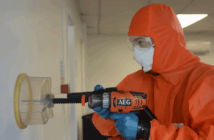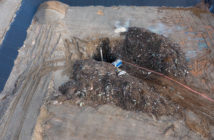The latest good practice guide for conducting an asbestos survey was published by WorkSafe in a 100 page plus manual of step-by-step guidance. It is essential reading. Asbestos surveys are designed to identify asbestos material in buildings and workplaces and provide information on the types of asbestos present, the quantity, and the condition of the asbestos.

These guidelines provide good practice advice for how to plan, carry out, and report the results of an asbestos survey. They will help PCBU who conduct asbestos surveys to comply with the requirements of the Health and Safety at Work Act 2015 (HSWA) and The Health and Safety at Work (Asbestos) Regulations 2016 (Regulations).
Buildings built before 1 January 2000 are likely to harbour asbestos containing materials (ACM). For buildings built after 1 January 2000, the risk of asbestos material being present is lower.
Asbestos surveyors have a duty to make sure the work they do does not create a risk to other people -– this means providing thorough and accurate survey reports that will allow for the appropriate management or removal of asbestos.
An asbestos survey is where a competent person (referred to as a surveyor in the guidelines) inspects a building or workplace to identify asbestos material or ACM, provide information on the location and quantity of asbestos present and report on the condition of the asbestos.
This information may then be used to create a plan on how to manage the asbestos in-situ, or safely remove it prior to renovation or demolition work, depending on the type of survey being done.
It covers topics ranging from the different types of asbestos surveys to the qualifications and experience needed to qualify as a competent person to provide asbestos surveys. About the only asbestos topic not covered in this set of guidelines relates to surveying contaminated land. WorkSafe has a separate publication for that.
These guidelines specifically are for PCBUs that carry out asbestos surveys (referred to as surveyors in these guidelines). They may also be useful for PBCUs that commission asbestos surveys or are otherwise involved in work that can disturb asbestos material, including:
- PCBUs that own, lease, or manage a building that has or could have asbestos in it
- PCBUs that carry out refurbishment and demolition work
- Asbestos removalists and assessors
- Architects, designers and building surveyors.
There is guidance available for other aspects of the management or removal of asbestos:
- Asbestos in Aotearoa New Zealand – information about what asbestos is, the risks of asbestos and why it must be managed.
- Managing asbestos in your building or workplace – guidelines for PCBUs about how to manage asbestos in their building or workplace (including when to engage an asbestos surveyor to assist with this).
- Protective clothing and equipment for working with or near asbestos – guidance for PCBUs that carry out any work where there is a risk of exposure to asbestos fibres.
- Good practice guidelines for asbestos removalists.
- Good practice guidelines for asbestos assessors.
- Asbestos in the home – information for homeowners about how to manage asbestos in their home
The guide focuses specifically on good practice for conducting asbestos surveys but WorkSafe recommends all who may come into contact with asbestos should have read all the literature available.




